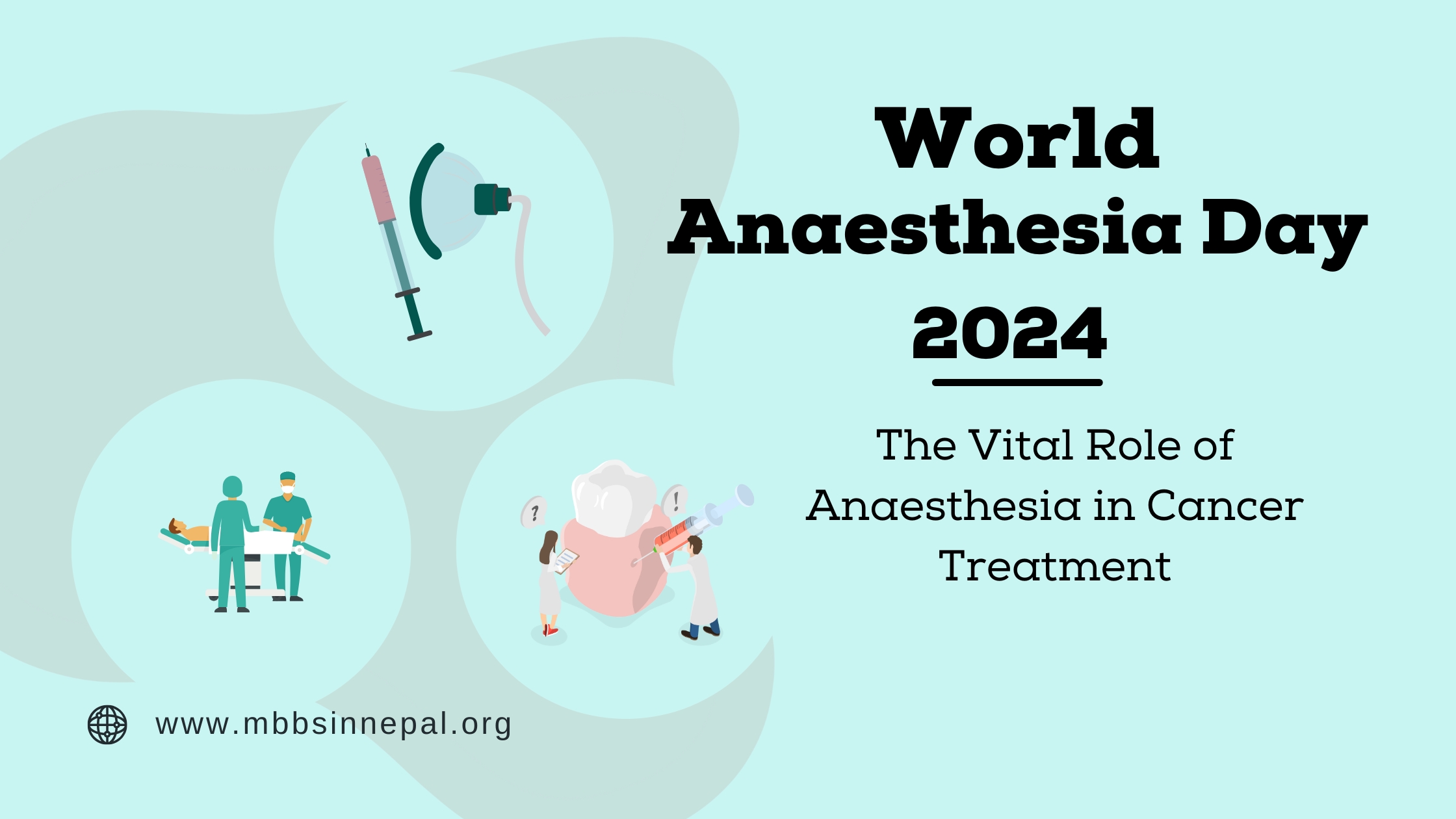World Anaesthesia Day is celebrated annually on October 16th, to remember its significant milestone in medical history—the first successful demonstration of ether anaesthesia in 1846. This day pays tribute to the progress made in anaesthesia and its crucial role in ensuring safe and effective medical procedures. This year, the theme of World Anaesthesia Day highlights the vital role anaesthesia plays in cancer treatment, highlighting how anaesthesiologists contribute to surgical interventions and other therapies, ensuring patient comfort and safety throughout the journey.
What is Anaesthesia?
Anaesthesia refers to the administration of medications that prevent patients from experiencing pain or discomfort during medical procedures. It allows doctors to perform surgeries and other treatments without causing pain, ranging from minor operations to complex cancer surgeries. The field has evolved significantly, offering different types of anaesthesia depending on the procedure and patient needs, thereby playing a critical role in modern healthcare.
Why is World Anaesthesia Day Celebrated?
World Anaesthesia Day is celebrated to honor the pioneering work of Dr. William T.G. Morton, who demonstrated the use of ether as an anaesthetic agent in a public surgery at Massachusetts General Hospital in 1846. This event marked the dawn of modern anaesthesia, transforming medical practice by making surgeries less painful and more accessible. The day also aims to increase awareness of the importance of anaesthesia in healthcare and recognize the contributions of anaesthesiologists.
The Importance of Anaesthesia
Anaesthesia is essential for enabling safe and effective medical procedures. It not only relieves pain during surgeries but also minimizes stress and discomfort for patients. In cancer treatment, anaesthesia is particularly significant for managing pain during surgical interventions, radiation therapies, and other procedures. Anaesthesiologists monitor patients’ vital signs throughout the process, ensuring they remain stable and comfortable.
Different Types of Anaesthesia
Anaesthesia can be classified into several types based on the level of sedation and the area of the body affected:
- General Anaesthesia: Induces complete unconsciousness, allowing for major surgeries such as tumor removals or complex cancer procedures. It is administered through inhalation or intravenous medications.
- Regional Anaesthesia: Blocks pain in a specific region of the body, such as the lower half during abdominal or limb surgeries. This includes spinal and epidural anaesthesia.
- Local Anaesthesia: Numbs are a small, specific area of the body, often used for minor procedures like biopsies or skin surgeries.
- Sedation: Ranges from mild to deep sedation, depending on the procedure, helping to relax patients while maintaining some level of consciousness.
The Role of Anaesthesia in Cancer Treatment
In cancer care, anaesthesia is indispensable for various reasons:
- Facilitates Surgical Interventions: Anaesthesia allows surgeons to perform intricate cancer surgeries with precision by keeping the patient pain-free and stable.
- Supports Pain Management: Anaesthesiologists help in managing chronic pain associated with cancer, ensuring patient comfort during treatment.
- Assists in Non-Surgical Therapies: Anaesthesia may also be used for other medical therapies such as radiation and diagnostic procedures, making them more tolerable for patients.
Anaesthesiologists are crucial members of the cancer treatment team, collaborating with oncologists and surgeons to optimize patient care.
How WRC Nepal is Fostering the Field of Anaesthesia
WRC Nepal is playing a pivotal role in advancing the field of anaesthesia by helping aspiring medical professionals gain admission to their dream colleges and universities globally. We focus on providing opportunities for higher education in medical fields. WRC Nepal supports students in finding programs that offer specialized training in anaesthesia and related disciplines. WRC Nepal guides students through the admission process and ensures that future anaesthesiologists and medical professionals receive the education they need to excel in their careers, ultimately contributing to improved cancer care and patient outcomes.
Courses Related to Anaesthesia
There are various educational pathways for those interested in pursuing a career in anaesthesia. Some of the common courses include:
- MBBS (Bachelor of Medicine and Bachelor of Surgery): The foundational course for aspiring doctors, with further specialization in anaesthesiology.
- MD in Anaesthesiology: A postgraduate program that offers in-depth training in anaesthetic techniques, pain management, and critical care.
- Diploma in Anaesthesia (DA): A shorter course that provides basic training in anaesthesia practices.
- Fellowship Programs: These specialized programs offer advanced training in fields like cardiac anaesthesia, neuro-anaesthesia, or pain management.
Alternative Career Options for Anaesthesiologists
Anaesthesiologists can explore various career paths beyond traditional roles:
- Pain Management Specialist: Focus on treating patients with chronic pain, including cancer-related pain.
- Critical Care Medicine: Work in intensive care units, managing patients with life-threatening conditions.
- Medical Educator: Teach and train future anaesthesiologists in academic institutions.
- Research and Development: Contribute to the development of new anaesthetic agents and techniques.
- Consultant in Palliative Care: Provide pain relief and comfort for terminally ill patients, particularly those with advanced-stage cancer.
Conclusion
World Anaesthesia Day 2024 serves as a reminder of the indispensable role that anaesthesia and anaesthesiologists play in the healthcare system, particularly in cancer treatment. With the theme highlighting their impact on cancer care, it acknowledges the significant contributions of anaesthesiologists who ensure patient comfort and safety during complex medical procedures. As organizations like WRC Nepal continue to support aspiring medical professionals, the field of anaesthesia will undoubtedly see further advancements, improving the quality of care for cancer patients worldwide.
By raising awareness and fostering a new generation of skilled anaesthesiologists, we can continue to push the boundaries of what’s possible in medical treatments, making every surgical intervention safer and more comfortable for patients. Subscribe to our YouTube channel https://www.youtube.com/@sudeepnayak7057/ to get the latest, updates, news, and information about studying MBBS in Nepal and MBBS Abroad.

